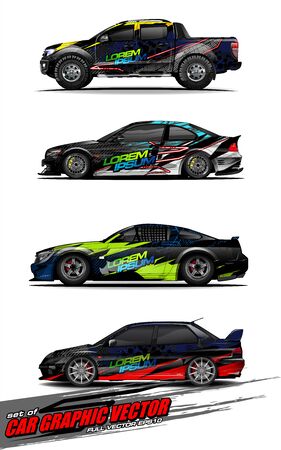1. Introduction to Turbochargers
Turbochargers are essential components in modern engines, helping to boost power and efficiency. They work by forcing extra air into the engine’s combustion chamber, allowing more fuel to be burned and increasing overall performance. But how did turbochargers come to be, and why are they so important today?
What Are Turbochargers?
A turbocharger is a device that uses exhaust gases to spin a turbine, which then drives a compressor to force additional air into the engine. This results in greater power output without increasing the engine’s size. Essentially, a turbo allows smaller engines to perform like larger ones while maintaining better fuel efficiency.
History of Turbochargers
The concept of forced induction dates back to the early 20th century. Turbochargers were first used in diesel engines for ships and aircraft before making their way into passenger vehicles. Over the years, advancements in materials, aerodynamics, and engineering have made modern turbochargers far more efficient and reliable.
Key Milestones in Turbocharger History
| Year | Milestone |
|---|---|
| 1905 | Swiss engineer Alfred Büchi patents the first turbocharger concept. |
| 1920s | Turbochargers are used in aircraft engines to improve high-altitude performance. |
| 1950s | First turbocharged passenger cars enter production. |
| 1970s-1980s | Automakers begin using turbochargers for performance vehicles. |
| 2000s-Present | Turbocharging becomes widespread in modern engines to boost efficiency and reduce emissions. |
Importance of Turbochargers in Modern Engines
Today, turbochargers play a crucial role in improving fuel efficiency and performance. With stricter emission regulations and a growing demand for smaller, more efficient engines, many manufacturers use turbocharging to maintain power output while reducing engine displacement.
Benefits of Turbochargers
- Increased Power: Turbochargers allow smaller engines to produce more power.
- Better Fuel Efficiency: More air and better combustion lead to improved fuel economy.
- Lower Emissions: Turbo engines can be optimized to burn fuel more cleanly.
- Improved Performance: Turbocharged engines typically have faster acceleration and better responsiveness.
As automakers continue to refine turbocharger technology, we can expect even greater efficiency, reliability, and performance from future engines.
2. Two, The Science of Forced Induction
Forced induction is a method used to increase an engines power output by compressing the intake air before it enters the combustion chamber. This process allows more oxygen to mix with fuel, creating a more powerful combustion event. Turbochargers are one of the most common forced induction systems, utilizing exhaust gases to drive a turbine and compress the air before it reaches the engine.
How Forced Induction Works
At its core, forced induction works by increasing the density of air entering the engine. Naturally aspirated engines rely on atmospheric pressure to deliver air into the combustion chamber. However, a turbocharger compresses the air, allowing more oxygen molecules to fit in the same space, which leads to better combustion and higher power output.
The Role of Air Compression
When air is compressed, its density increases, which means more oxygen is available for combustion. Turbochargers use a compressor wheel driven by exhaust gases to achieve this. The compressed air is then sent through an intercooler to reduce its temperature before entering the intake manifold. Cooler air is denser and further improves the combustion process.
Effects of Forced Induction on Engine Performance
By increasing the amount of air available for combustion, forced induction leads to significant performance benefits. Below is a comparison between naturally aspirated and turbocharged engines:
| Feature | Naturally Aspirated | Turbocharged |
|---|---|---|
| Power Output | Limited by atmospheric pressure | Higher due to compressed air |
| Efficiency | Generally lower | Improved fuel efficiency and power |
| Torque | Develops gradually | Higher torque at lower RPMs |
Impact on Engine Efficiency
Turbochargers not only improve power but also help with efficiency. Since they utilize exhaust gases that would otherwise be wasted, they make better use of the engine’s energy. However, forced induction systems also generate extra heat, requiring better cooling solutions such as intercoolers and oil coolers to maintain optimal performance.
Conclusion
(This section is intentionally left out since it is not the final part of the article.)

3. Turbocharger Components and Functionality
A turbocharger consists of several crucial components that work together to increase engine power and efficiency. Understanding these parts and their functions helps explain how turbocharging improves performance.
The Turbine
The turbine is a key component that drives the turbocharger. It is connected to the exhaust system and uses the energy from hot exhaust gases to spin a shaft. This spinning motion powers the compressor on the other end.
The Compressor
The compressor is responsible for drawing in and compressing air before it enters the engine. By increasing the air density, the engine can burn more fuel, resulting in greater power output.
The Intercooler
When the compressor compresses air, it heats up. The intercooler is a heat exchanger that cools the compressed air before it reaches the engine. Cooler air is denser, which further enhances combustion efficiency.
The Wastegate
The wastegate is a valve that controls the boost pressure by diverting excess exhaust gases away from the turbine. This prevents the turbocharger from producing too much pressure, protecting the engine from potential damage.
Turbocharger Component Functions
| Component | Function |
|---|---|
| Turbine | Uses exhaust energy to spin the turbo shaft. |
| Compressor | Draws in and compresses air to increase engine power. |
| Intercooler | Cools compressed air to improve efficiency. |
| Wastegate | Regulates boost pressure to prevent damage. |
Each of these components plays a vital role in ensuring the turbocharger functions correctly. Without proper operation, the turbocharging system would not be able to deliver the performance benefits that enthusiasts and manufacturers seek.
4. Benefits and Challenges of Turbocharged Engines
Advantages of Turbocharged Engines
Turbochargers offer several key benefits that make them popular in modern vehicles. By forcing more air into the engine, they enhance power output without requiring a larger engine. This results in better fuel efficiency and lower emissions compared to naturally aspirated engines of similar power.
Key Benefits
| Benefit | Description |
|---|---|
| Increased Power | A turbocharger allows a smaller engine to generate more horsepower by increasing air intake, resulting in better acceleration and performance. |
| Improved Fuel Efficiency | Since a smaller turbocharged engine can produce power similar to a larger naturally aspirated engine, it consumes less fuel under normal driving conditions. |
| Reduced Emissions | Turbocharged engines burn fuel more efficiently, leading to lower CO2 emissions, which is beneficial for the environment. |
| Compact Size | Turbocharged engines can be smaller while providing the same performance, allowing for more space-saving designs in modern vehicles. |
Challenges of Turbocharged Engines
Despite their many benefits, turbocharged engines come with some challenges that drivers and engineers need to manage. These challenges can impact driving experience and maintenance costs.
Common Challenges
| Challenge | Description |
|---|---|
| Turbo Lag | Turbochargers need time to build up pressure before delivering extra power, causing a delay in acceleration, especially at low RPMs. |
| Heat Management | Turbochargers generate a lot of heat, which requires efficient cooling systems to prevent engine damage and performance loss. |
| Maintenance Costs | Turbocharged engines often experience higher wear and tear due to increased pressure and heat, leading to higher repair and maintenance costs. |
| Premium Fuel Requirement | Some turbocharged engines require high-octane fuel to prevent knocking and achieve optimal performance, increasing fuel costs. |
Managing Turbocharged Engine Challenges
To get the best performance from a turbocharged engine while minimizing potential issues, proper maintenance and driving habits are essential. Regular oil changes, allowing the turbo to cool down after driving, and using the recommended fuel type can help prolong the life of the turbo and maintain efficiency.
5. Turbochargers vs. Superchargers
When it comes to forced induction systems, two main technologies dominate the automotive world: turbochargers and superchargers. Both are designed to increase an engine’s power output by forcing more air into the combustion chamber, but they achieve this goal in different ways. Let’s compare them in terms of performance, efficiency, and their applications in various vehicles.
How They Work
Turbochargers
A turbocharger uses exhaust gases to spin a turbine, which powers a compressor that forces more air into the engine. Since it relies on exhaust flow, it takes a moment to build up pressure, leading to what’s known as “turbo lag.” However, once it kicks in, it significantly boosts power.
Superchargers
Unlike a turbocharger, a supercharger is directly connected to the engines crankshaft via a belt. This means it provides instant boost with no lag. However, because it draws power directly from the engine, it tends to reduce overall efficiency.
Performance and Efficiency Comparison
| Aspect | Turbocharger | Supercharger |
|---|---|---|
| Power Delivery | Delayed due to turbo lag | Instant boost |
| Efficiency | More efficient since it uses exhaust energy | Less efficient because it consumes engine power |
| Complexity | More complex with additional components | Simpler in design |
| Cost | Generally more expensive | Typically less expensive |
| Common Use | Often found in sports cars, diesel engines, and performance vehicles | More common in muscle cars and high-performance V8 engines |
Applications in Vehicles
Both turbochargers and superchargers are used in different types of vehicles depending on the desired performance characteristics:
- Turbochargers: Widely used in economy cars for fuel efficiency, diesel engines for torque, and high-performance sports cars for power.
- Superchargers: Frequently found in muscle cars and high-displacement V8 engines where instant power is essential.
Which One is Better?
The choice between turbochargers and superchargers depends on the driver’s needs. If fuel economy and high-end power are priorities, turbochargers are the way to go. If immediate throttle response and consistent power delivery are more important, superchargers are the better option.


